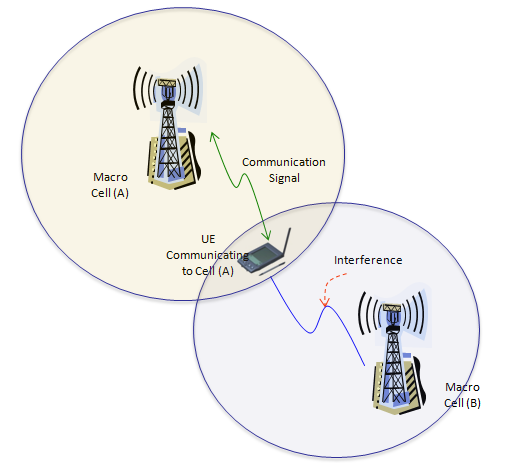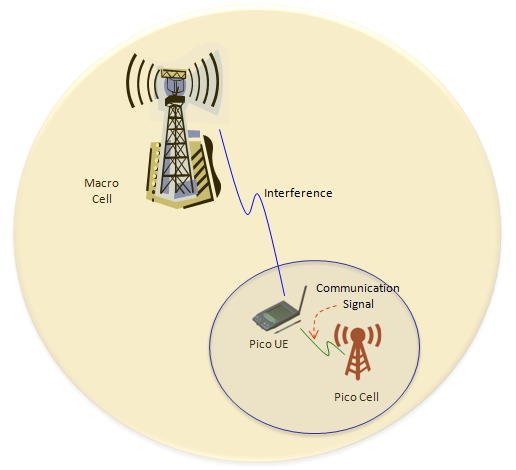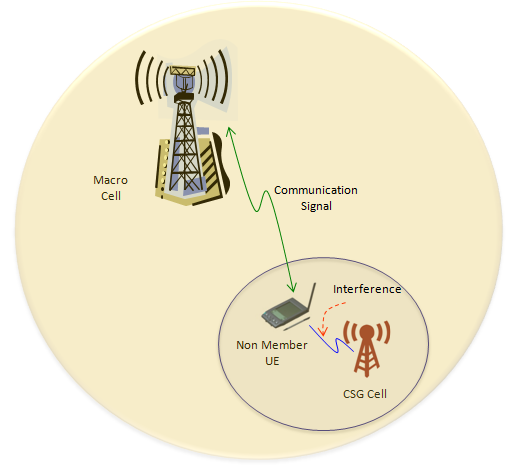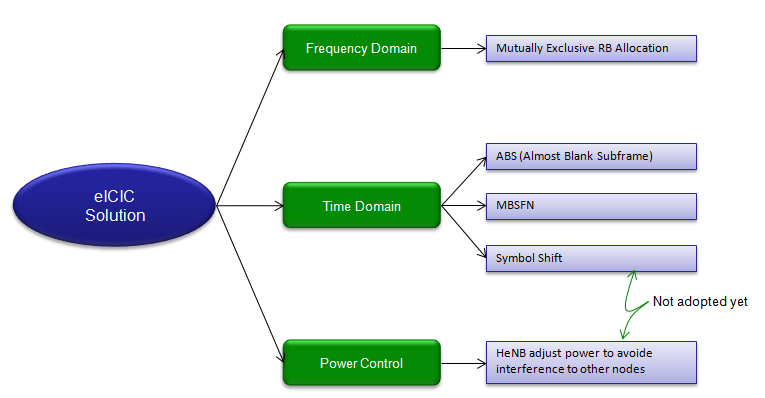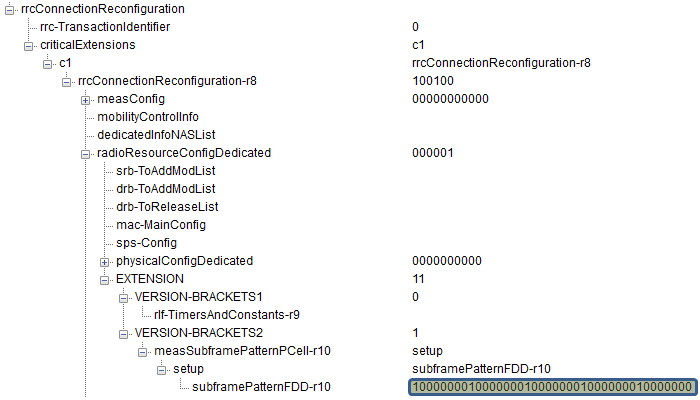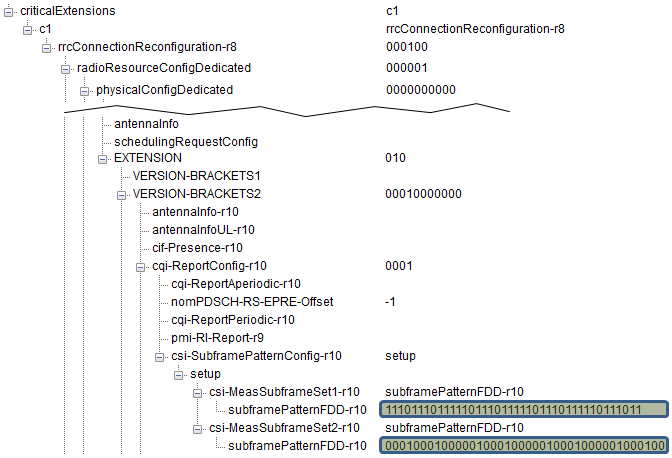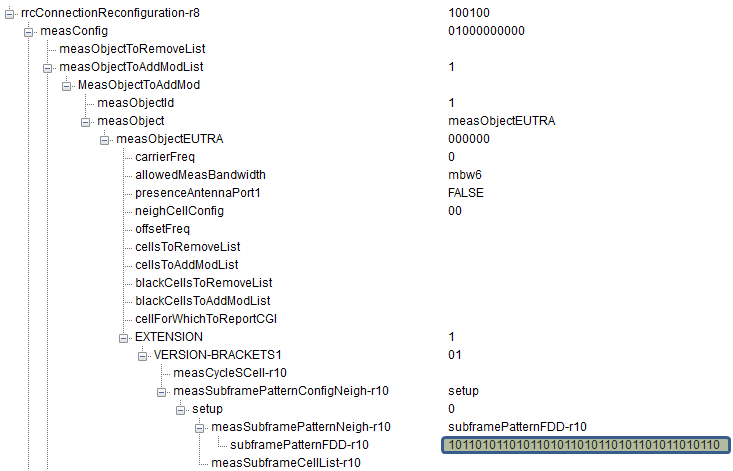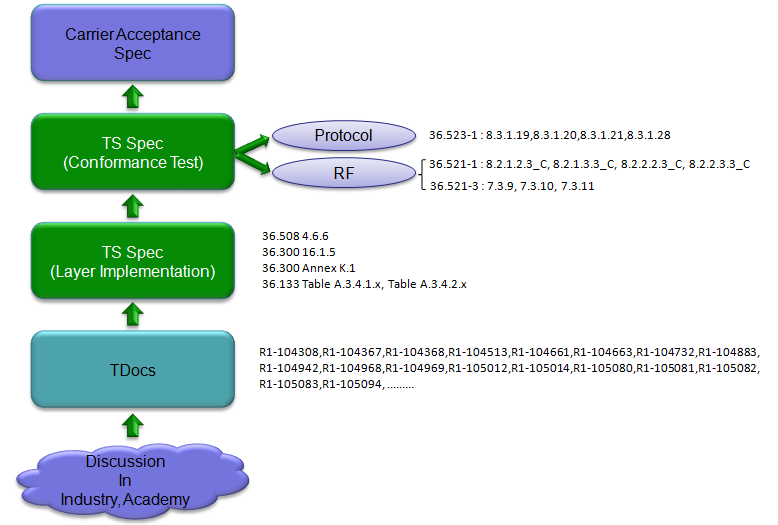|
4G/LTE - Interference |
||||||||||||||||||||||||||||||||||||||||||||||||||||||||||||||||||||||||||||||||||||||||||||||||||||||||||||||||||||||||||||||||||||||||||||||||||||||||||||||||||||||||||||||||||||||||||||||||||||||||||||||||||||||||||
|
ICIC(Inter-Cell Interference Coordination)
As the term ICIC stands for, it is a type of technology which is designed to reduce the interference created by two or more cells. In which situation do you think a UE suffer most seriously from this kind of interference ? We can easily think of following cases.
Approaches to Solution
There has been a lot of discussions about the solutions. Following is a kind of baseline idea on the approaches to solution from R1-104942. Some of them has been adopted in 3GPP specification as of now (36.300), but some of them are not reflected in the spec or still need further clarification. But I quoted the full list from R1-104942 to give you broader idea on possible solution. For further details, refere to R1-104942. I think the items marked in blue is reflected in 3GPP spec now.
Possible Solutions
As you know, LTE signal (actually most of the communication signal) has two components. Time domain component and frequency domain components. So the interference can occur in both domains.
Now we have to think about how we can reduce the interference on Frequency Domain and Time Domain.
In Frequency Domain, one way to reduce the interference would be to allocate the resource blocks from multiple neighbouring cells in such a way that the allocated resource blocks does not overlap each other. For example, if a cell (e.g, serving cell) allocated RB0~10 for a UE, let neighbouring cell allocate RB 15~20 for another UE.
In Time Domain, one way to reduce the interference is that a cell (e.g, serving cell) stop transmitting at a certain subframe so that other cell (e.g, a femto/pico cell) can transmit the signal during that period. But sometimes completely stoping the signal transmission would cause some issues. So it would be recommended to transmit the signal in very low power in stead of completely stopping the transmission. These subframe with very low signal power is called 'Almost Blank Subframe (ABS)'.
What I described above can be illustrated as shown below. (For further details on Channels being transmitted in ABS frame in various situation, refer to A.3.4 ABS Transmission Configurations of 36.133)
Does this illustration make sense to you ? First think on your own about what this illustration indicate before you read the following.
Now look at the upper track figure showing the resource grid and focus on the yellow color resource blocks. Left one is the resource grid for eNB1 (left) and Right one is the resource grid for eNB2 (right). The yellow color resource block are the ones that user data is being transmitted. If you compare the yellow color Resource block of the two resource grid, the position never overlaps each other. It means for each symbol the user data from two different eNB is being transmitted in different subcarrier (different frequency) so they do not interfere each other.
Now let look at the lower track. These plot represents the cell power for each subframe (time domain). The tall/wide bars represents the subframe where user data is being transmitted in high power and the small/narrow bars represents ABS subframe that carries only fundamental channels without any user data. In this plot as well, you would notice that both cell transmit user data in certain symbols, but the subframe carrying the user data does not overlap each other.
These two tracks of figure shows fundamental mechanism of eICIC. Upper one shows how to reduce the interference in frequency domain and Lower one shows how to reduce the interference in time domain. In current 3GPP test specification, only time domain method is adopted but frequency domain method can be applied depending on situation.
Channel Configuration for eICIC
As I mentioned above, the most important way to implement eICIC as of now is to use ABS (Almost Blank Symbol). The ABS is not a simple turning off certain channels. It is specific composition letting the most fundamental channels (e.g, Sync Channel and Confrol Channel) still detectable by UEs but minimze the interference. Following table shows some example of ABS channel composition defined in 3GPP specification. But in real application, these composition would vary depending on situation.
More detailed channel configuration of non-ABS and ABS subframes with various antenna configuaration and use/non-use of MBSFN is as shown below. (This is based on 36.133)
The above table is a consolidated table of following tables in 36.133 Table A.3.4.1.1 Non-MBSFN ABS Transmission, 1x2 antenna with PBCH Table A.3.4.1.2 Non-MBSFN ABS Transmission, 2x2 antenna without PBCH Table A.3.4.1.2-2: Transmission configuration #2 with non-MBSFN ABS, 2x2 without PBCH Table A.3.4.2.1-1: Transmission configuration with MBSFN ABS, 1x2 Table A.3.4.2.2-1: Transmission configuration #1 with MBSFN ABS, 2x2 Table A.3.4.2.2-2: Transmission configuration # 2 with MBSFN ABS, 2x2
RRC for eICIC
In terms of signaling point of view, eICIC is a dedicated channel process. It means a specific configuration information need to be exchanged between UE and the network via signaling messages for each specific UEs.
The first step is for a UE to inform the network of whether it support eICIC or not. This information is carried by Feature Group Indicator (FGI) in UE Capability Information message as indicated below.
< FGI in UE Capability Information >
featureGroupIndRel10-r10: 00000000 [bit length 32, 0000 0000 0000 0000 0000 0000 0000 0000 decimal value 0] 0... .... = Indicator 101: DMRS with OCC (orthogonal cover code) and SGH (sequence group hopping) disabling - Not supported .0.. .... = Indicator 102: Trigger type 1 SRS (aperiodic SRS) transmission (Up to X ports) - Not supported ..0. .... = Indicator 103: PDSCH TM9 when up to 4 CSI reference signal ports are configured - Not supported ...0 .... = Indicator 104: PDSCH TM9 for TDD when 8 CSI reference signal ports are configured - Not supported .... 0... = Indicator 105: PUCCH RM2-0 when PDSCH TM9 is configured and RM2-1 when PDSCH TM9 and up to 4 CSI reference signal ports are configured - Not supported .... .0.. = Indicator 106: PUCCH RM2-1 when PDSCH TM9 and 8 CSI reference signal ports are configured - Not supported .... ..0. = Indicator 107: PUSCH RM2-0 when PDSCH TM9 is configured and RM2-2 when PDSCH TM9 and up to 4 CSI reference signal ports are configured - Not supported .... ...0 = Indicator 108: PUSCH RM2-2 when PDSCH TM9 and 8 CSI reference signal ports are configured - Not supported 0... .... = Indicator 109: PUCCH RM1-1 submode 1 - Not supported .0.. .... = Indicator 110: PUCCH RM1-1 submode 2 - Not supported ..0. .... = Indicator 111: Measurement reporting trigger Event A6 - Not supported ...0 .... = Indicator 112: SCell addition within the Handover to EUTRA procedure - Not supported .... 0... = Indicator 113: Trigger type 0 SRS (periodic SRS) transmission on X Serving Cells - Not supported .... .0.. = Indicator 114: Reporting of both UTRA CPICH RSCP and Ec/N0 in a Measurement Report - Not supported .... ..0. = Indicator 115: Time domain ICIC RLM/RRM / ICIC RRM / ICIC CSI measurement sf restriction for the serving cell / neighbour cells - Not supported .... ...0 = Indicator 116: Relative transmit phase continuity for spatial multiplexing in UL - Not supported
< subframePattern >
If network confirms that a specific UE is capable of eICIC, it can inform UE of more specific information about its eICIC configuration. One example is about measurement subframe information as shown below. With this information, network tells a UE "I am configuring this and this and this subframe as ABS to reduce the interference, so don't try any measurement for such subframe".
This IE represents "Time domain measurement resource restriction pattern for the PCell measurements (RSRP, RSRQ and the radio link monitoring). (See 36.331)
< csi-MeasSubframeSet >
You can send a similar information about csi-Measurement as well by following information element. Here you see two different sets of csi-MeasSubframetSet.
Note 1 : cqi-pmi-ConfigIndex (According to 36.331) If subframe patterns for CSI (CQI/PMI/PTI/RI) reporting are configured (i.e. csi-SubframePatternConfig is configured), the parameter applies to the subframe pattern corresponding to csi-MeasSubframeSet1.
Note 2 : cqi-pmi-ConfigIndex2 (According to 36.331) The parameter applies to the subframe pattern corresponding to csi-MeasSubframeSet2
< measSubframePatternConfigNeigh >
This IE represents "Time domain measurement resource restriction pattern applicable to neighbour cell RSRP and RSRQ measurements on the carrier frequency indicated by carrierFreq. For cells in measSubframeCellList the UE shall assume that the subframes indicated by measSubframePatternNeigh are non-MBSFN subframes." (See 36.331)
Test Specification
Following is 3GPP Test cases to test eICIC, but as of the latest release (ETSI TS 136 521 V11.2.0 (2013-10)), the specification is not finalized yet. So just try to understand overall test logic.
Following is from 36.508
Following is from 36.521-1
Following is from 36.521-3
Following is from 36.523-1
Reference - 3GPP
Actually eICIC is a huge topic covering from physical layer to signaling layer, and it is hard to describe all the details in this post. If you want to know further details of this technology, refer to the specification as summarized below. As you know, 3GPP TS specification is very dry.. it just say "Do this, Do that" and does not say anything about "why we need to do this ?". If you are interested more in technical background rather than dry instructions, I would recommend you to read TDocs first.
Reference - General
Sound simple ? If yout think it is too simple, I think I misled you by providing you with too high level picture. In engineering, Nothing is as simple as it sound -:).
If you want to go a little bit more details, please refer to following introduction. (I think this is better introduction than mine -:) 4G-LTE-Blogspot : ICIC and eICIC
If you want to go a little bit more details than the previous one, please refer to following introduction. 3G and 4G Wireless Blog : eICIC: Enhanced inter-cell interference coordination in 3GPP Release-10
If you want an extreme details, please refer to following article. Bell-Lab : Algorithms for Enhanced Inter Cell Interference Coordination (eICIC) in LTE HetNets (If this link does not work, try this).
If you want in-depth material in more practical sense, please refer to following : Mahmoud I. Kamel et al : Performance Evaluation of a Coordinated Time-Domain eICIC Framework based on ABSF in Heterogeneous LTE-Advanced Networks
For the offical 3GPP document, refer to 36.300 , 16.1.5 Inter-cell Interference Coordination (ICIC)
You can find some articles about eICIC (with test equipment and deployed network).
|
||||||||||||||||||||||||||||||||||||||||||||||||||||||||||||||||||||||||||||||||||||||||||||||||||||||||||||||||||||||||||||||||||||||||||||||||||||||||||||||||||||||||||||||||||||||||||||||||||||||||||||||||||||||||||
